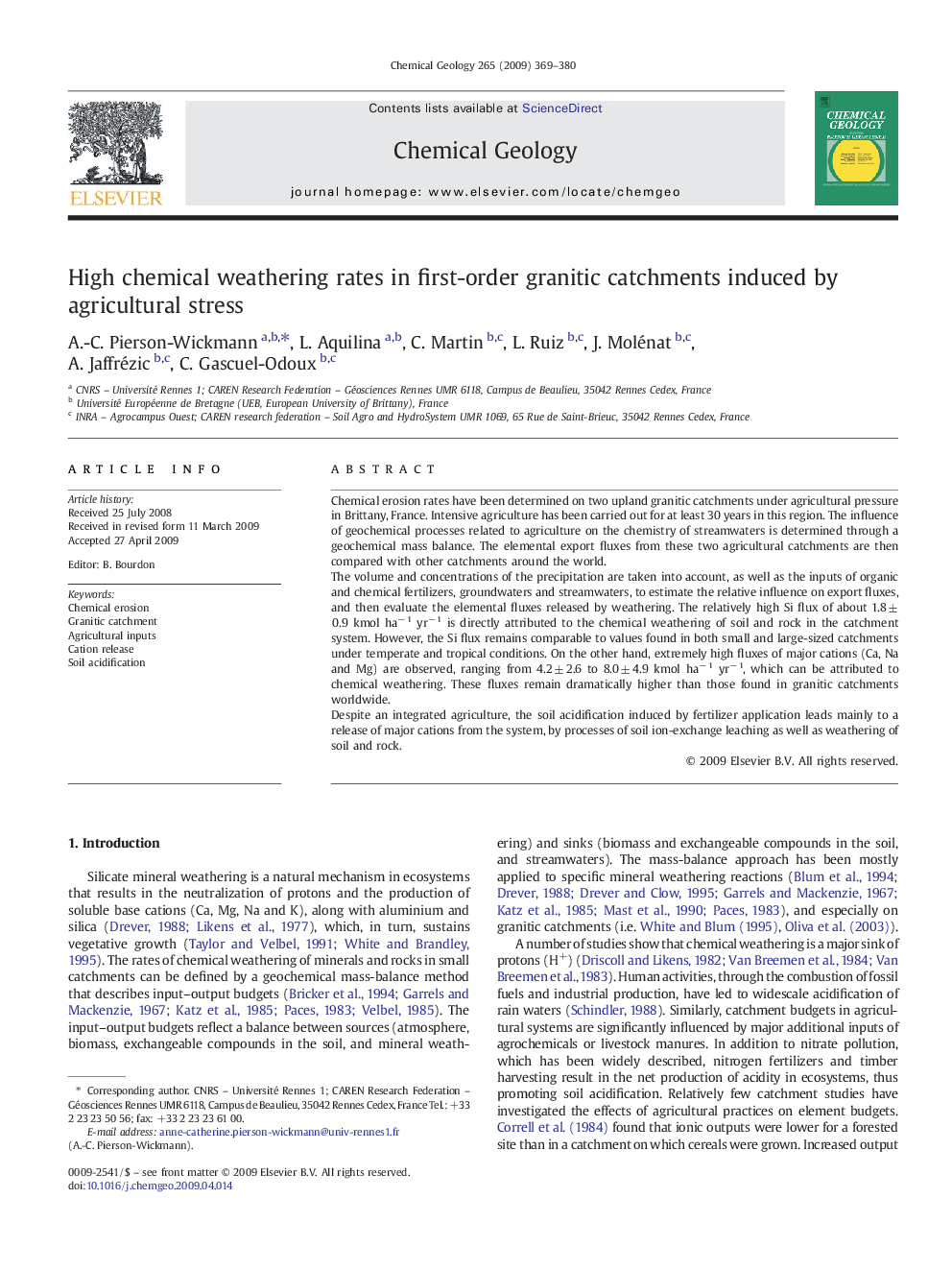| Article ID | Journal | Published Year | Pages | File Type |
|---|---|---|---|---|
| 4700221 | Chemical Geology | 2009 | 12 Pages |
Chemical erosion rates have been determined on two upland granitic catchments under agricultural pressure in Brittany, France. Intensive agriculture has been carried out for at least 30 years in this region. The influence of geochemical processes related to agriculture on the chemistry of streamwaters is determined through a geochemical mass balance. The elemental export fluxes from these two agricultural catchments are then compared with other catchments around the world.The volume and concentrations of the precipitation are taken into account, as well as the inputs of organic and chemical fertilizers, groundwaters and streamwaters, to estimate the relative influence on export fluxes, and then evaluate the elemental fluxes released by weathering. The relatively high Si flux of about 1.8 ± 0.9 kmol ha− 1 yr− 1 is directly attributed to the chemical weathering of soil and rock in the catchment system. However, the Si flux remains comparable to values found in both small and large-sized catchments under temperate and tropical conditions. On the other hand, extremely high fluxes of major cations (Ca, Na and Mg) are observed, ranging from 4.2 ± 2.6 to 8.0 ± 4.9 kmol ha− 1 yr− 1, which can be attributed to chemical weathering. These fluxes remain dramatically higher than those found in granitic catchments worldwide.Despite an integrated agriculture, the soil acidification induced by fertilizer application leads mainly to a release of major cations from the system, by processes of soil ion-exchange leaching as well as weathering of soil and rock.
